Two days ago I started posting about this city, but had so many photos I had to finish the post before I got to the actual city part. Now I'm forced to make it a series, which I don't mind at all. Today I'm going to show you the rest of my photos, or just a part of it, depending on how it goes.

The city is called Sighișoara, it is located in Transylvania, Romania and has a rich history.
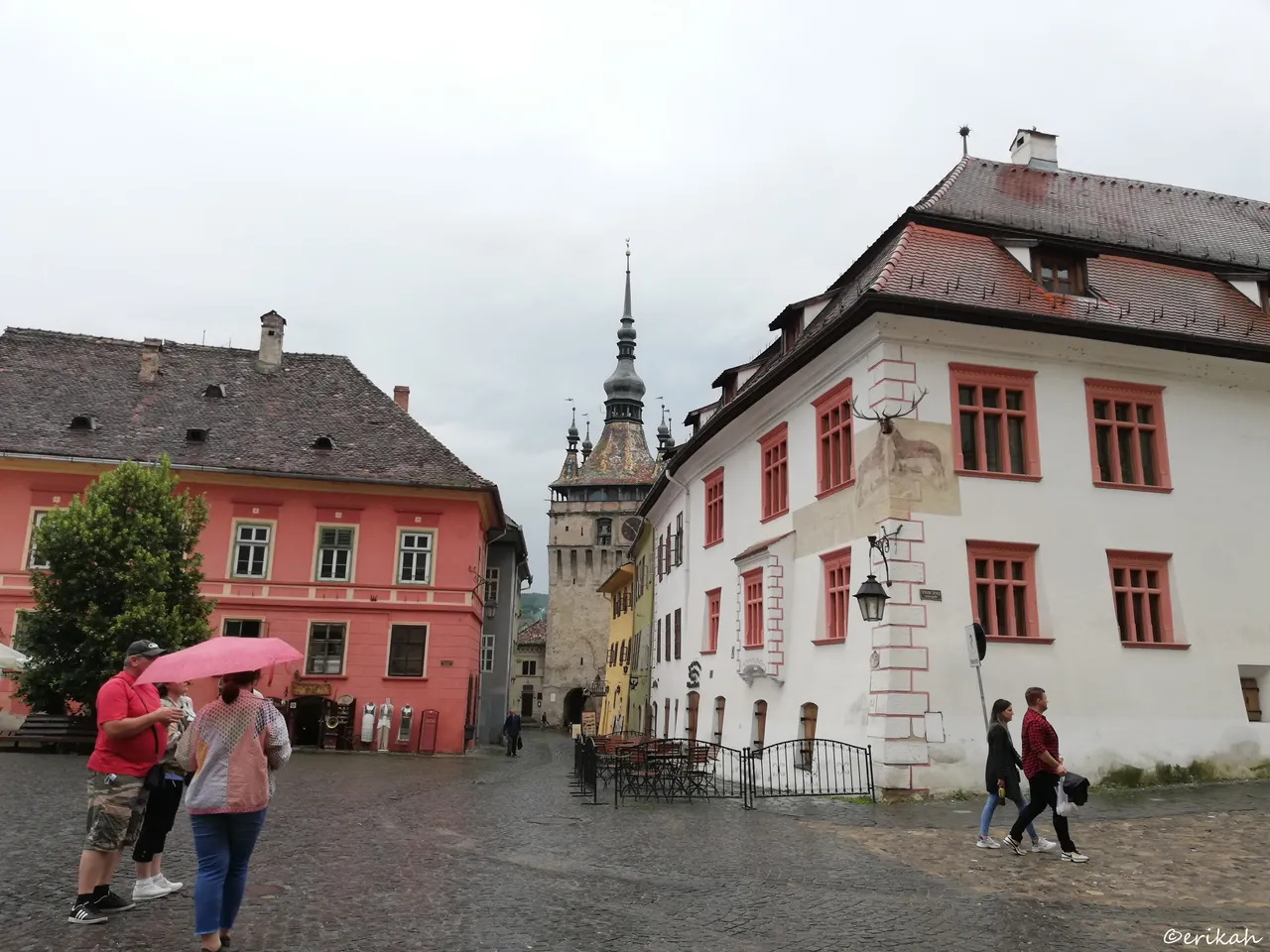
The minute you pass the arcades that I posted about in my last post, you find yourself in the main square. On the right you see the famous historical clock tower. The tower that served as town hall until 1556 is 64 m high and it's visible from every part of the city.
It used to host the Public Administration, and, during holidays, the city orchestra; since the end of 19th century though it hosts the History Museum of Sighisoara. Another important feature of this tower is the balcony which is the most important observation point of the city: the wide view allowed to sight eventual fires in time in order to reach promptly one of the nine places in all Sighisoara that could provide water. It was vital to prevent the spread of flames because at that time the city did not dispose of much water; it was necessary in fact to dig for 35m to find a source of water. source
I've been in the tower several times, the view is amazing from up there. As I said in my previous post, there was no time to visit everything, so we will go back at some point as it worth a visit.
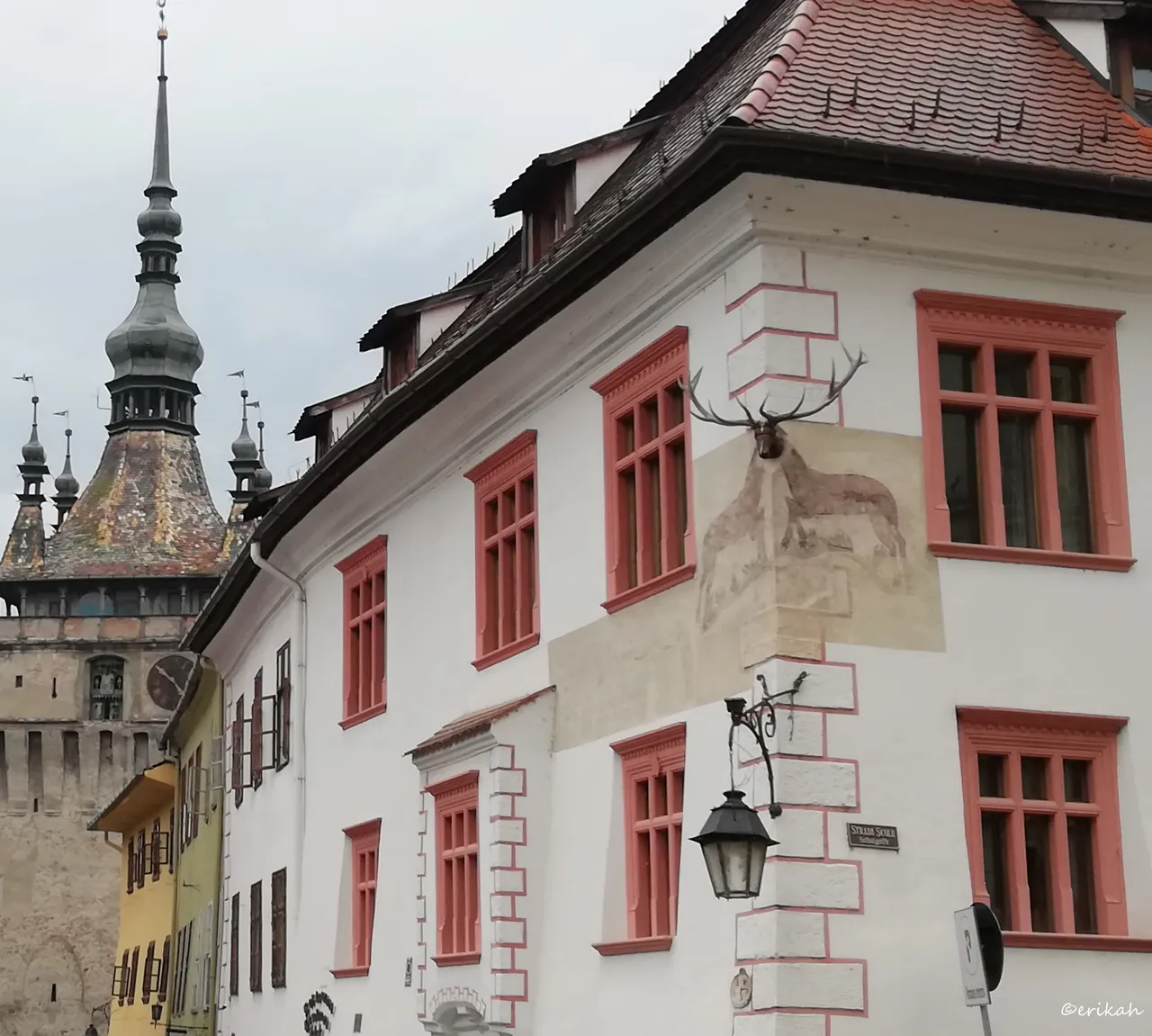
This is a cropped image of the previous one so you can see the corner of the building. It has been renovated recently why keeping the most important part intact. This is how you preserve history.
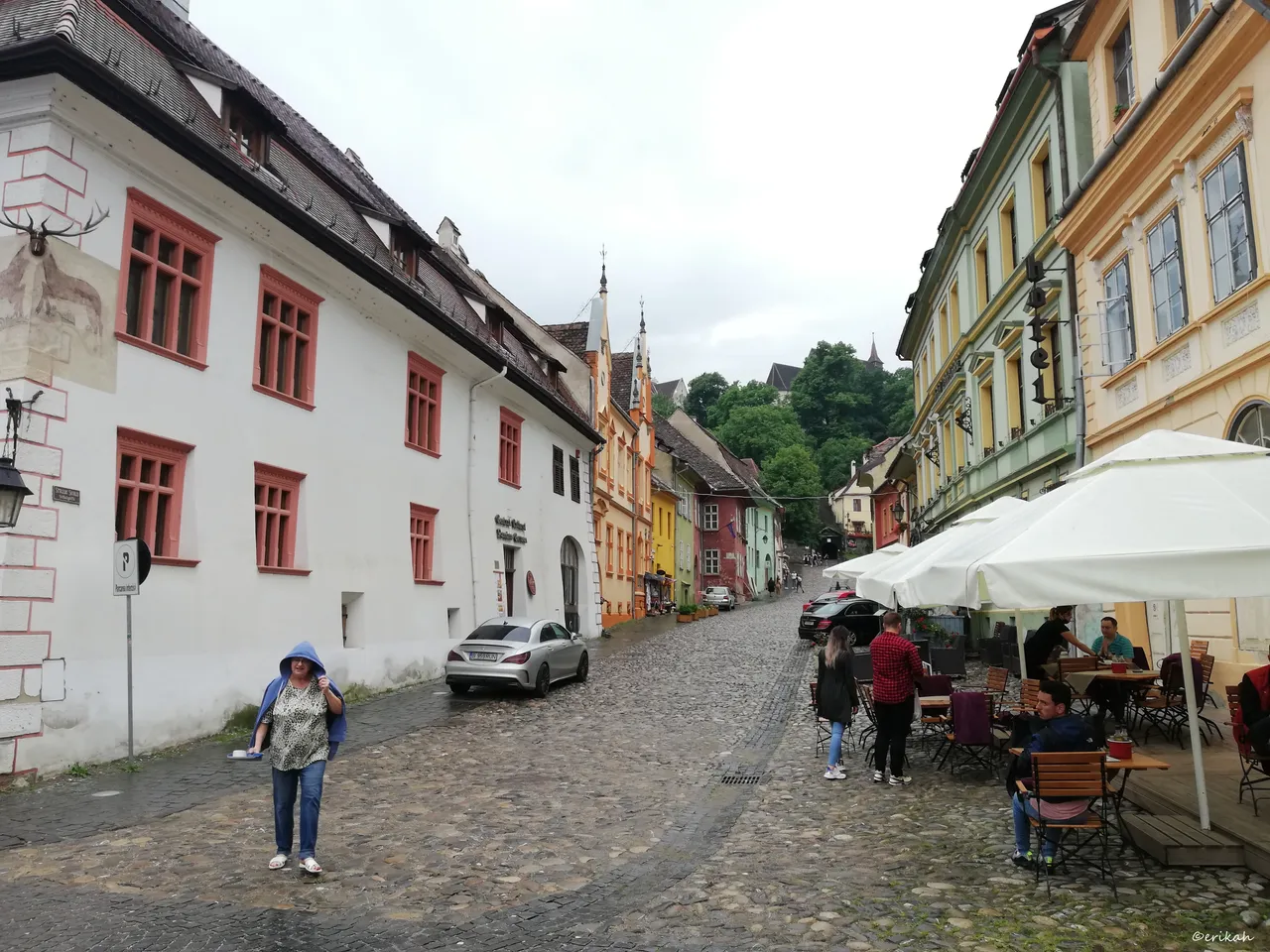
More old, narrow, cobblestone streets just like the other were at the entrance. That was the first weekend after the lockdown was lifted. @livinguktaiwan mentioned at my other post, that there were no people or just a few. Here there were a few people serving lunch or having a beer or a coffee but not many as it was raining as well.

This is a restaurant and guesthouse, probably half or totally empty. Restaurants were not allowed to have guests inside that time, on the terrace tables had to be placed two meters from each other. Not the best way to attract clients, but what can you do as this crazy invisible enemy has no limits.
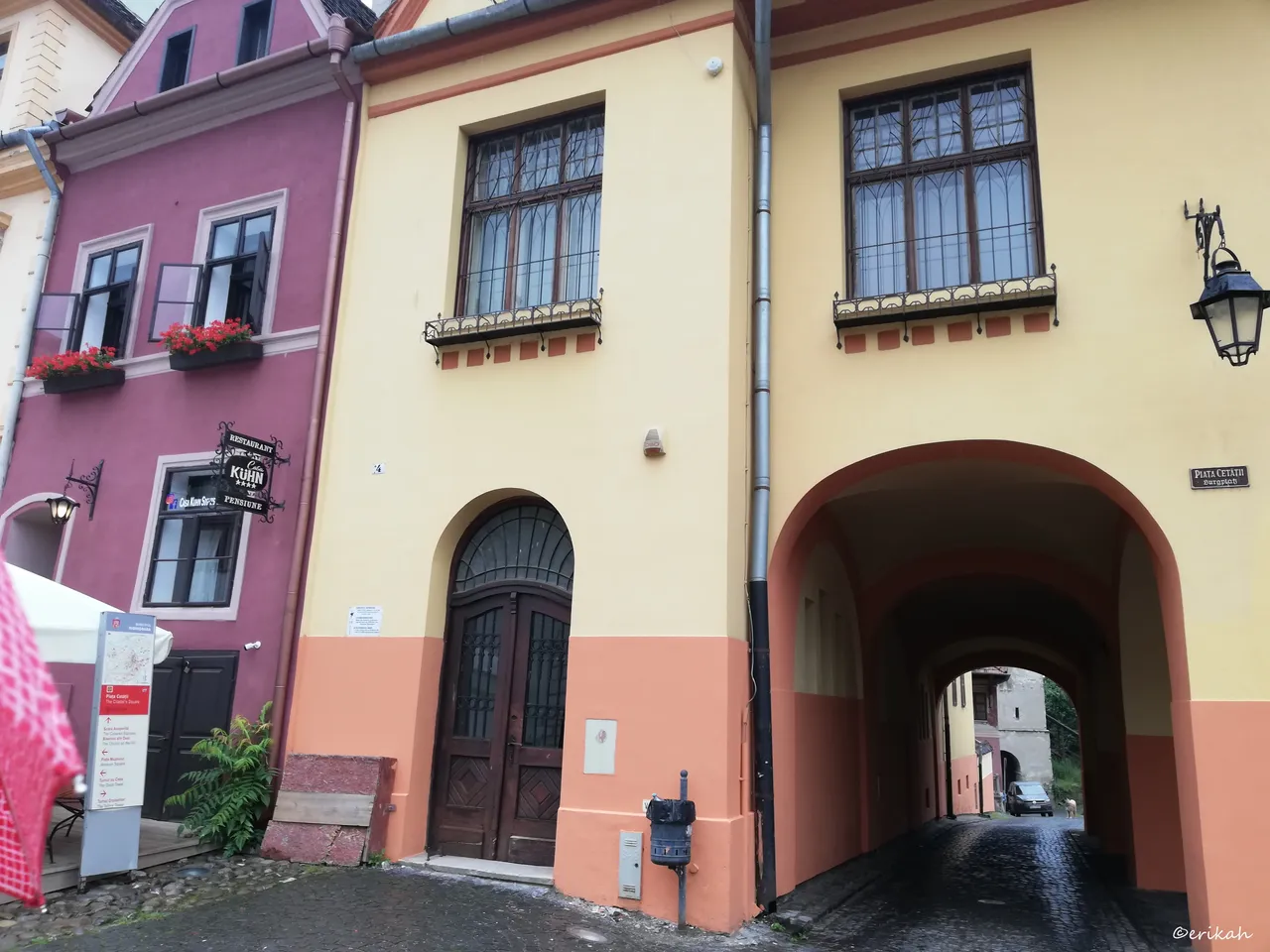
Another house with arcade.
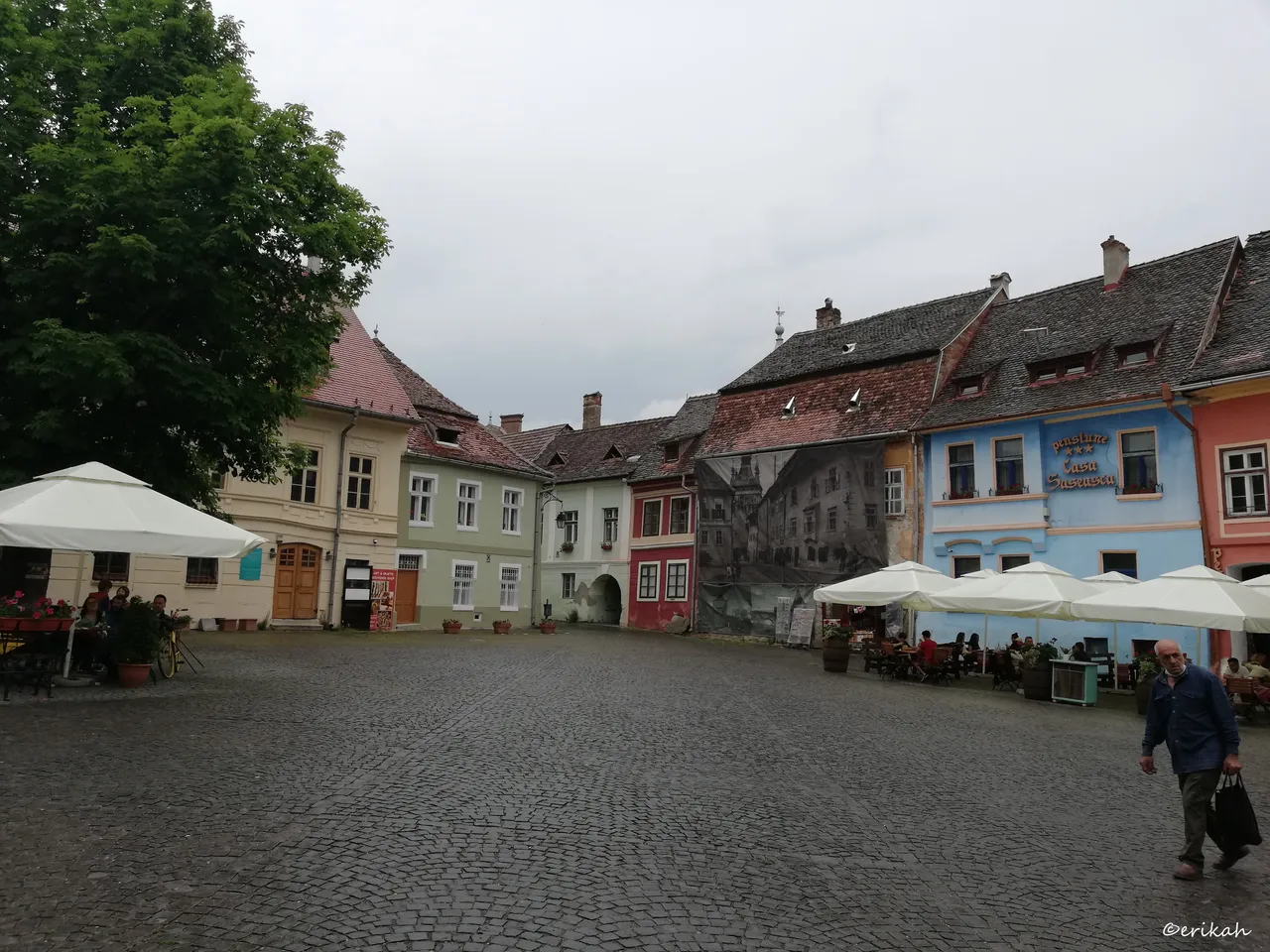
Part of the main square with these old houses that once had belonged to wealthy nobles. Now most of these are functioning as guest houses (obviously a very profitable activity), souvenir shops, restaurants, cafes etc. The blue house is a guest house, called the Saxon house.
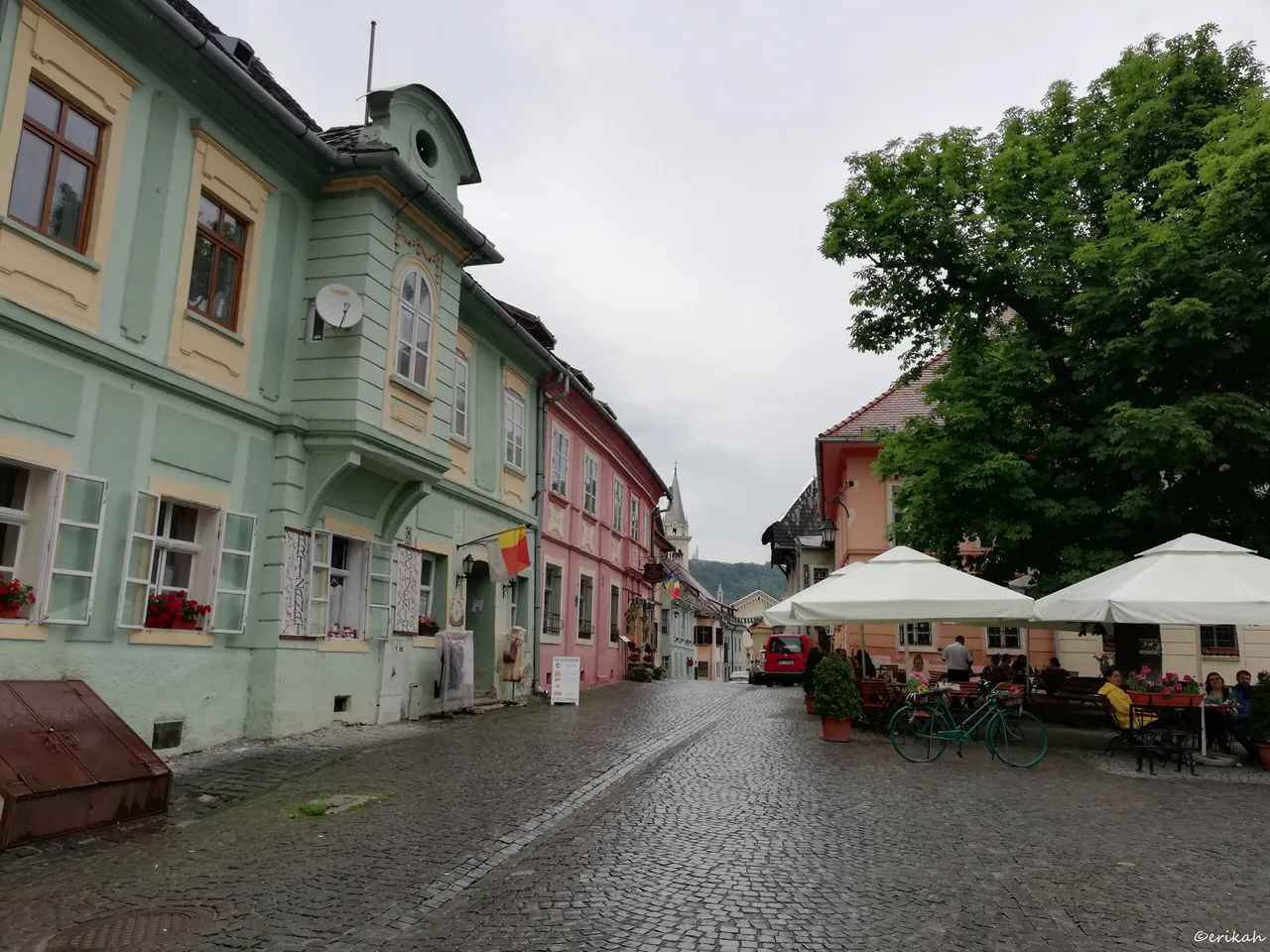
Having a house here is a great responsibility but also a profitable investment.

On the way to the tower, there's this antique store, selling all kinds of souvenirs, starting from fold costumes and old medieval armors to musical instruments, hand painted ceramics, jewelry, you name it.
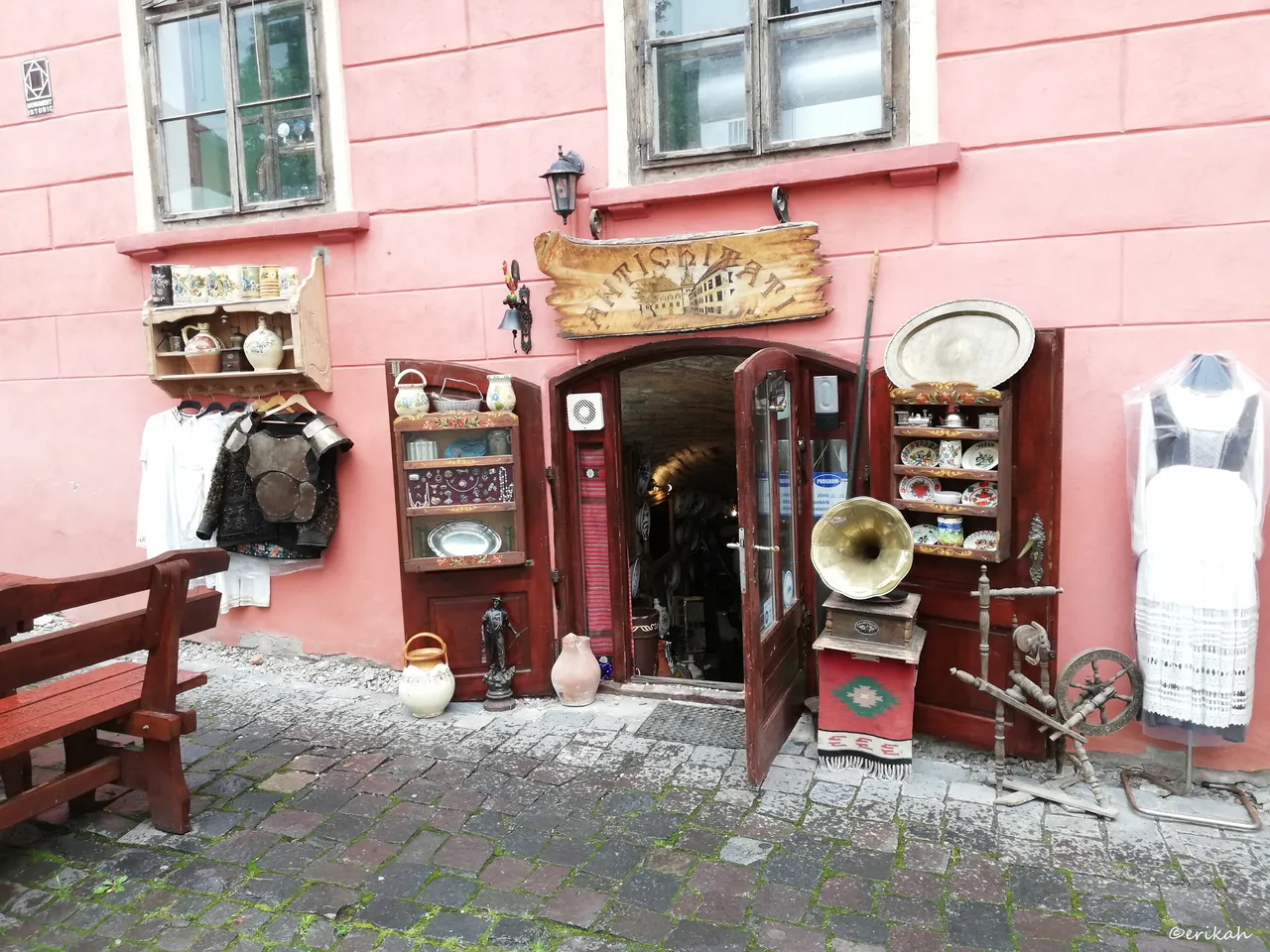
I love these shops and almost always go in to have a look but rarely buy anything as in places like this, prices are always so high that the deal looks like a rip off.
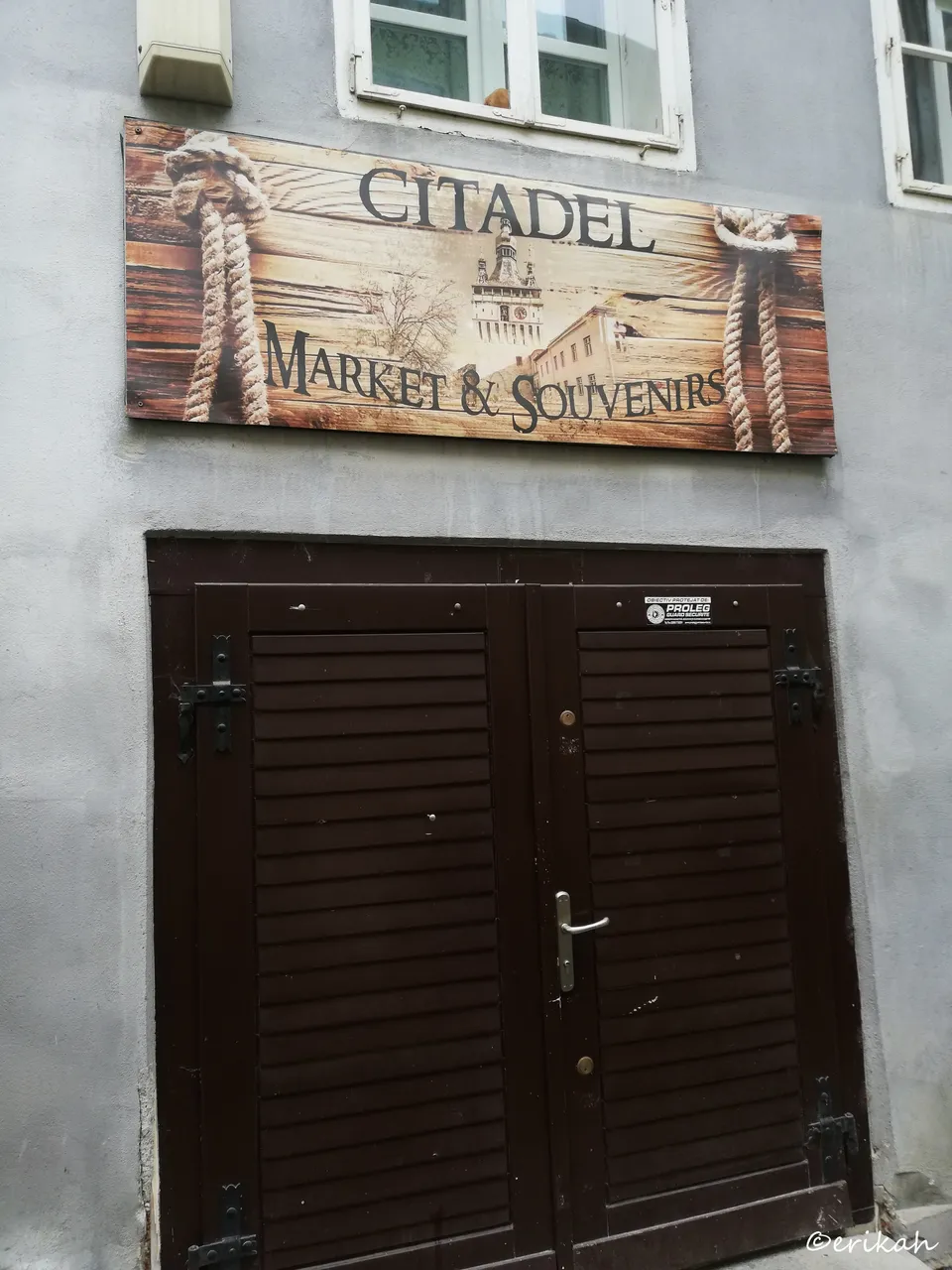
Just around the corner there was another souvenir shop, which was closed at the moment of our visit. These streets usually are full of tourists, regardless of the season. Imagine foreigners, they love these shops and usually buying a lot as these things you can't find on every corner outside Romania.

Another interesting building, with these gorgeous window shutters made of wood and decorated with iron.
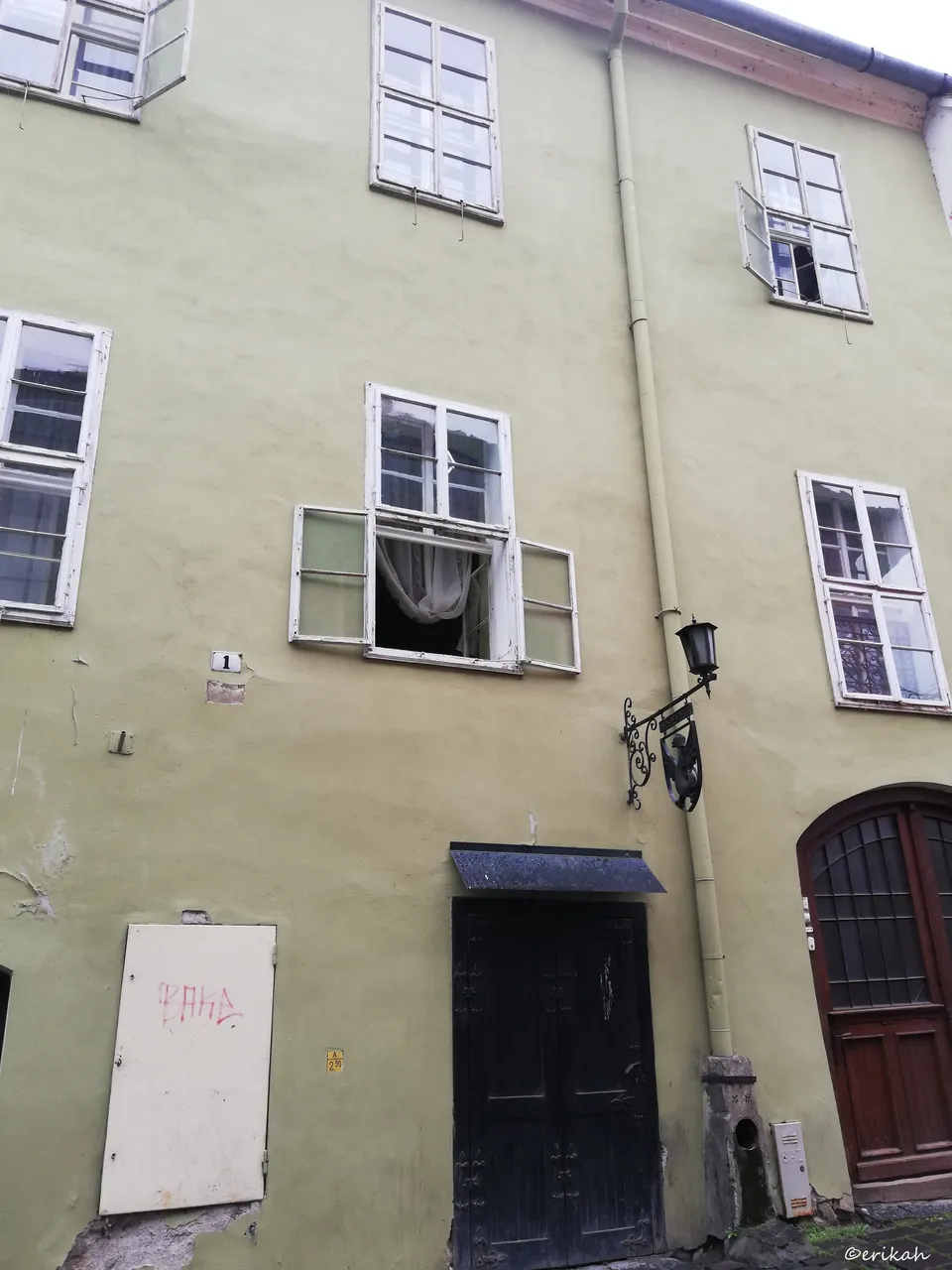
Turns out it was a souvenir shop that was closed. Next time I'm going to visit every one of them and take photos if they allow me.
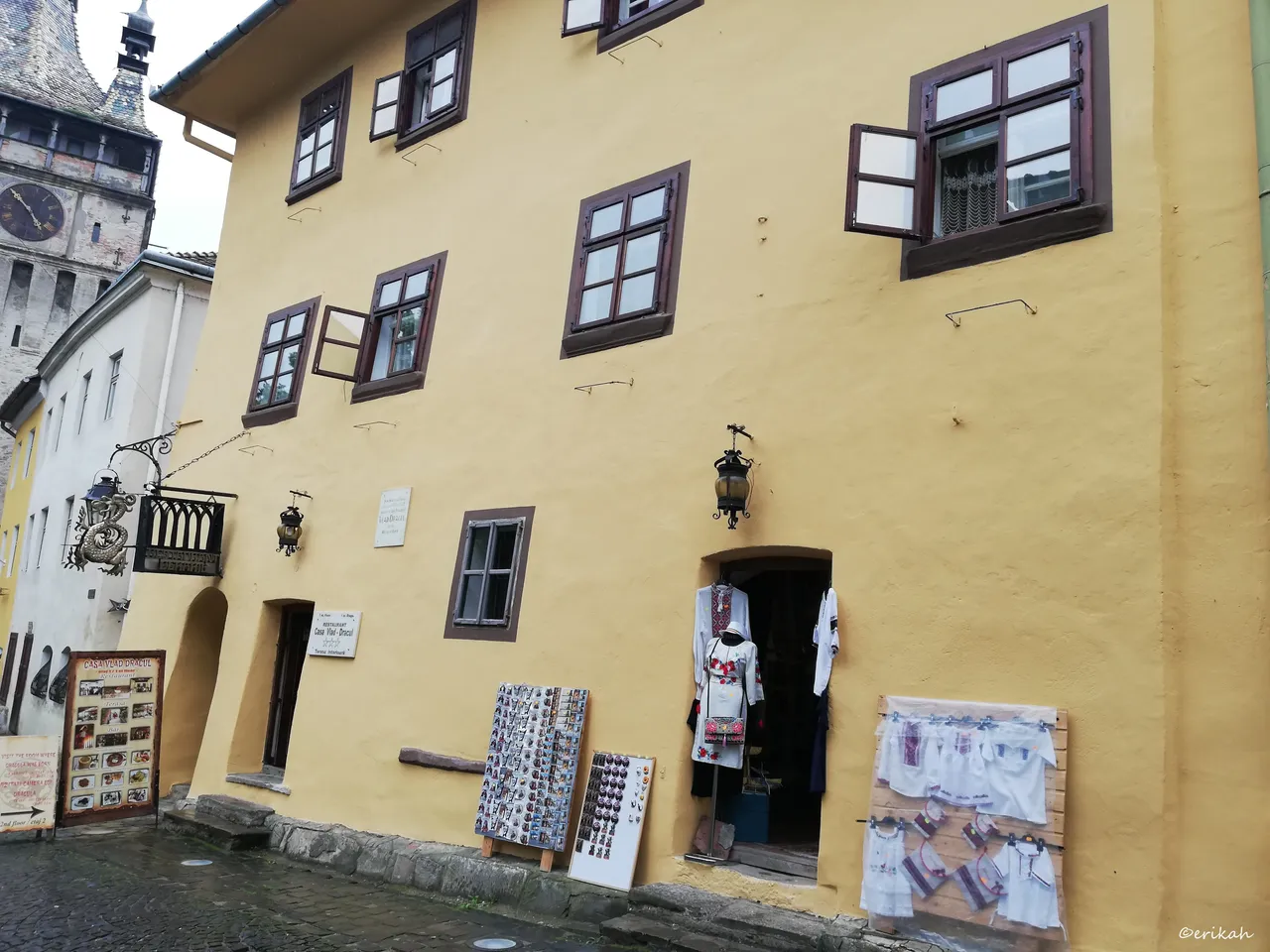
Even though this is just another souvenir shop, I could not leave without taking a photo. The house with those tiny windows is very cute, exactly what I love when it comes to medieval buildings. The shop was selling folk costumes, magnets and garments decorated with folk elements. This is usually what you can find in these souvenir shops.
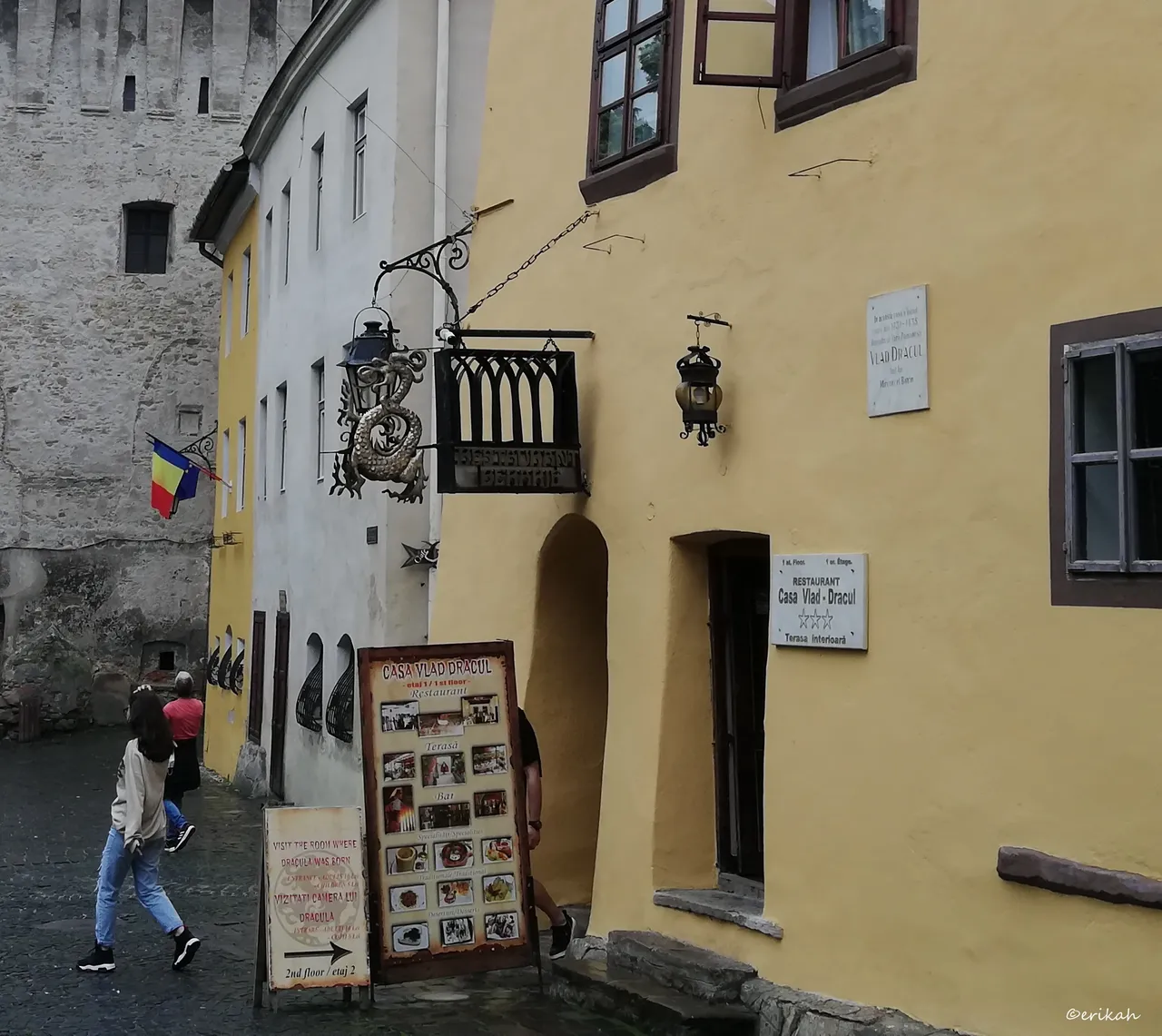

Casa Vlad Dracul, aka Dracila's house, a restaurant at the 1st floor with a terrace, serving traditional food.
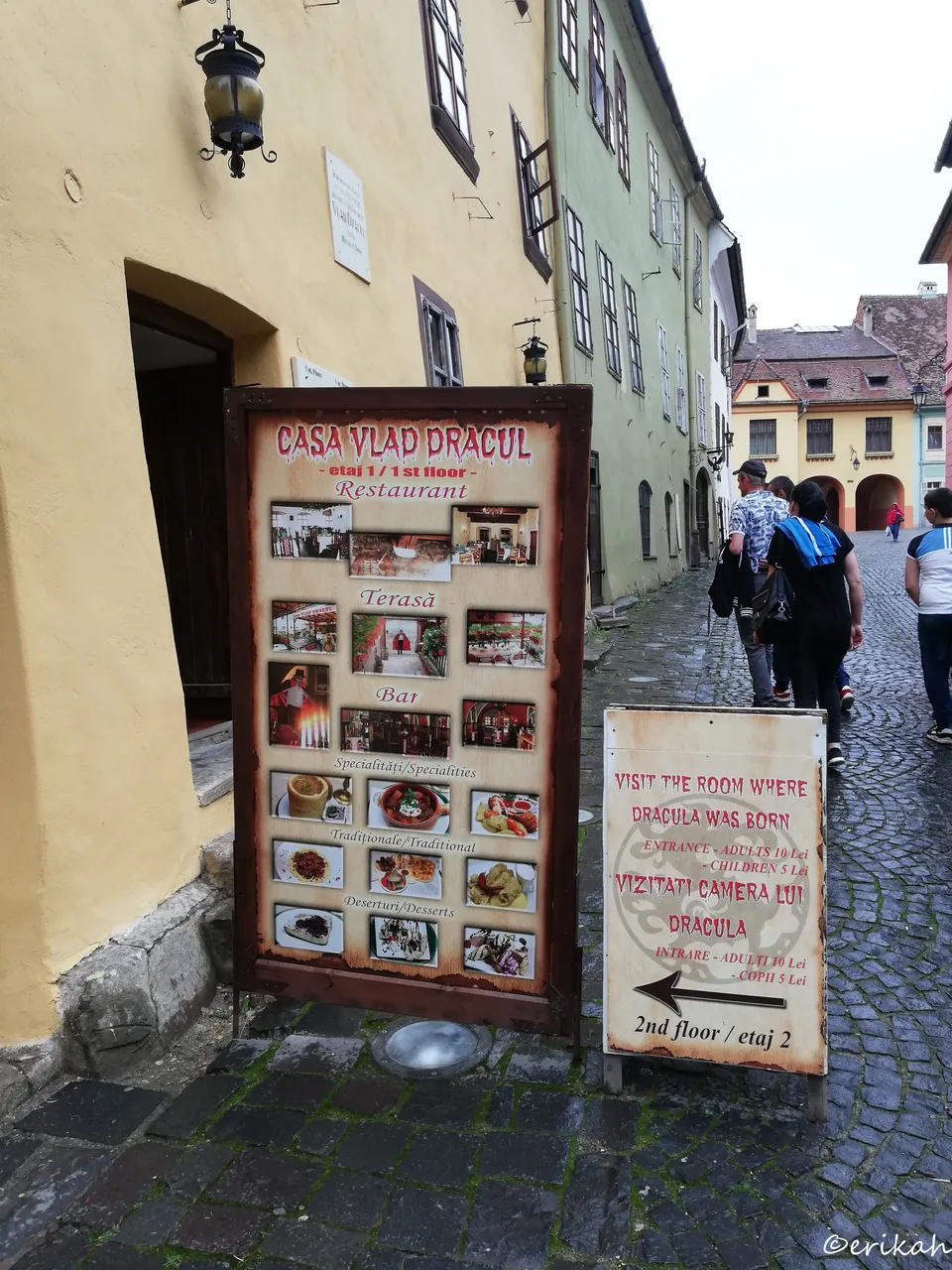
Looking at the menu I can see they have a good offer, bean soup in bread crust, stuffed cabbage, just to name a few. And as the board shows, Dracula will also be showing up at some point 😁 Everything to attract customers, right?
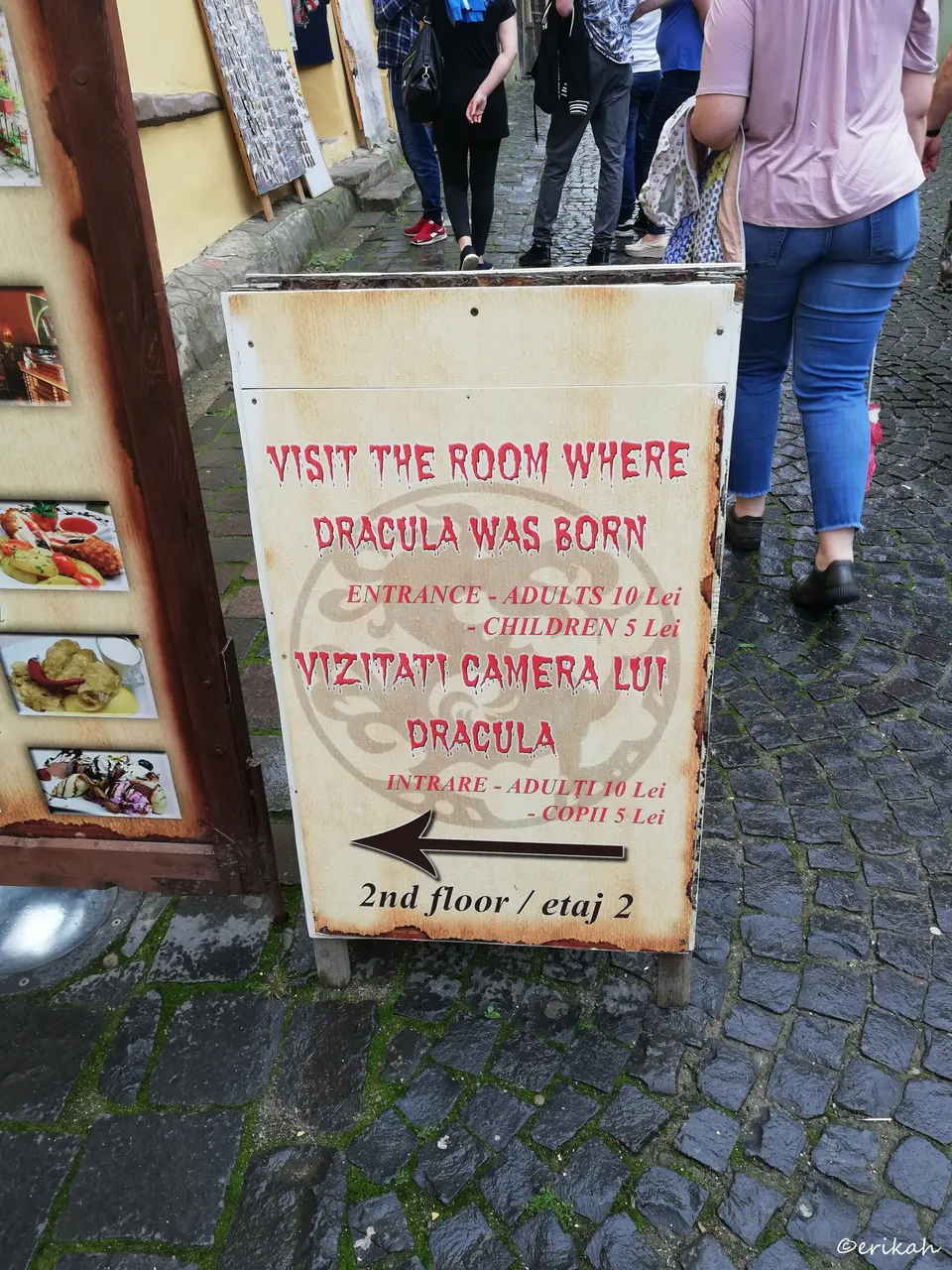
For a small fee you can visit the room where Dracula was born.
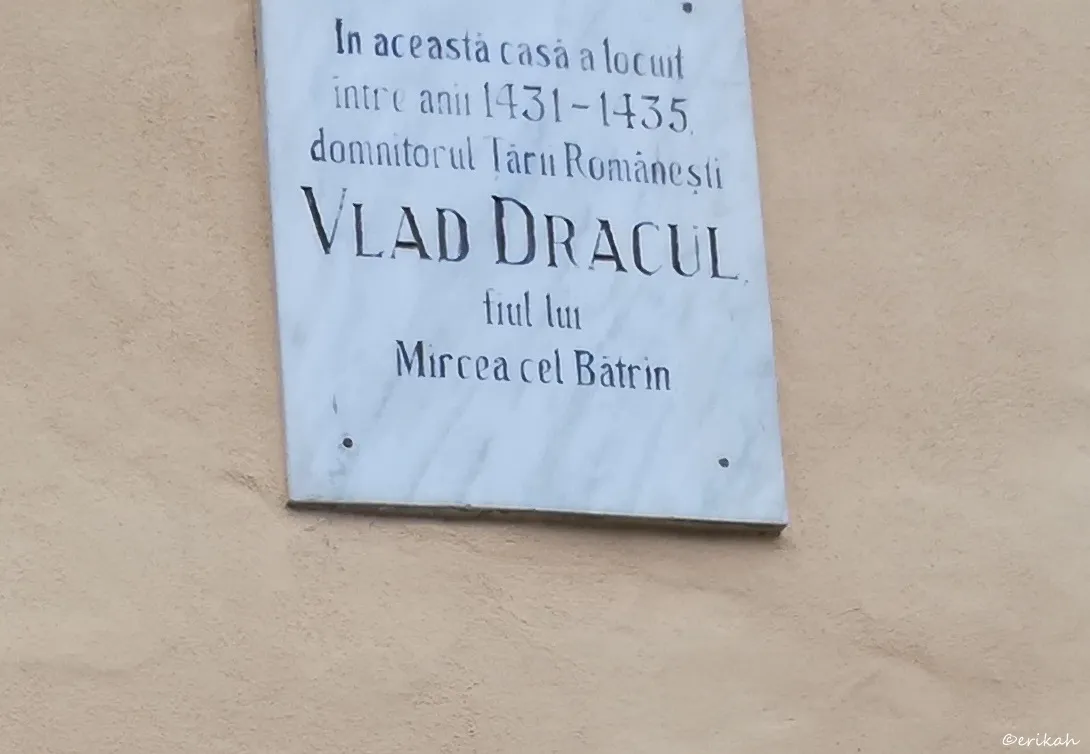
This marble plate says Vlad Dracul, ruler of the Romanian country, son of Mircea cel Batran lived here between 1431 and 1435.
Sometimes all people know about Romania is Dracula and maybe the capital of the city, which is Bucharest but many are confusing it with Budapest, which is the neighbor country, Hungary's capital city. Nadia Comaneci is also known by the older people, as she's a quite famous gymnast who made history. She was the first to be rewarded with a maximum of 10 in 1976, which at the time was the perfect score.
Imagine tourist seeing the house of Dracula. I bet it's full all the time. I haven't been in there yet, maybe I will visit next time if there's no crowd, although with the new covid-19 restrictions, who knows.
If you want to know the whole Dracula story, I'd say you read the Wikipedia article about Dracula. It is quite interesting and worth reading. If you want the short version, I can tell you that Dracula is just a character from the Gothic horror novel written by Irish author Bram Stoker in 1897, based on Vlad Dracul, who I've mentioned above.
Stoker spent seven years researching European folklore and stories of vampires, being most influenced by Emily Gerard's 1885 essay "Transylvania Superstitions" which includes content about a vampire myth. The reputation for cruelty of the Romanian ruler of Wallachia Vlad III Dracula, which Stoker first learned about in 1881, inspired the name of the count Dracula. However, Dracula's scholar Elizabeth Miller has remarked that aside from the name and some mention of Romanian history, the background of Stoker's Count bears no resemblance to that of Vlad III Dracula. source
This is the second part of the story but there are still photos I have to post, so stay tuned for the next episode.

Check out my latest travel posts:
- The Medieval City - Part 1.
- The Blacksmith Workshop At The Dracula Daneș Domain
- The Park At Dracula Daneș Domain
- Horses And The Stable At Dracula Daneș Domain
- Horse Riding At Dracula Daneș Domain
- Carriage Museum At Dracula Daneș Domain
- Lunch At The Dracula Daneș Domain
- Kindness I encountered from strangers while traveling: Vienna, the city where everyone is helping
